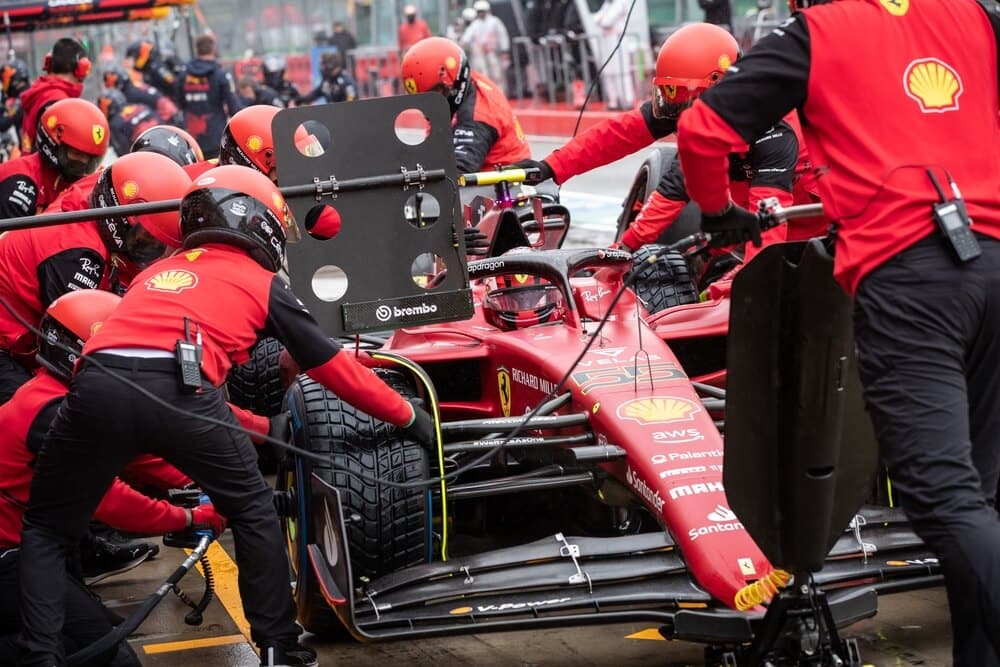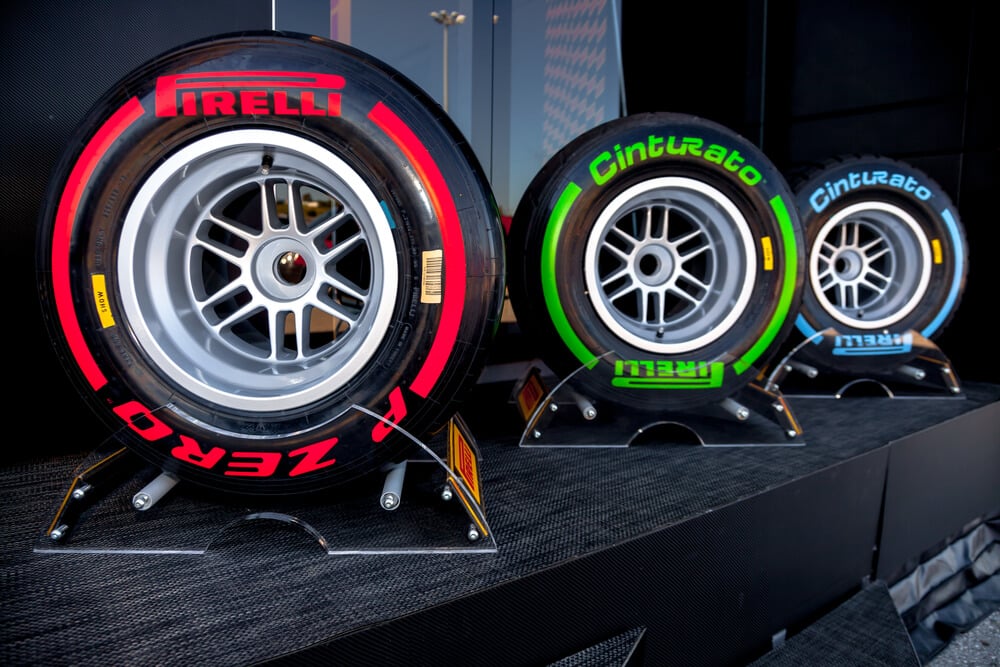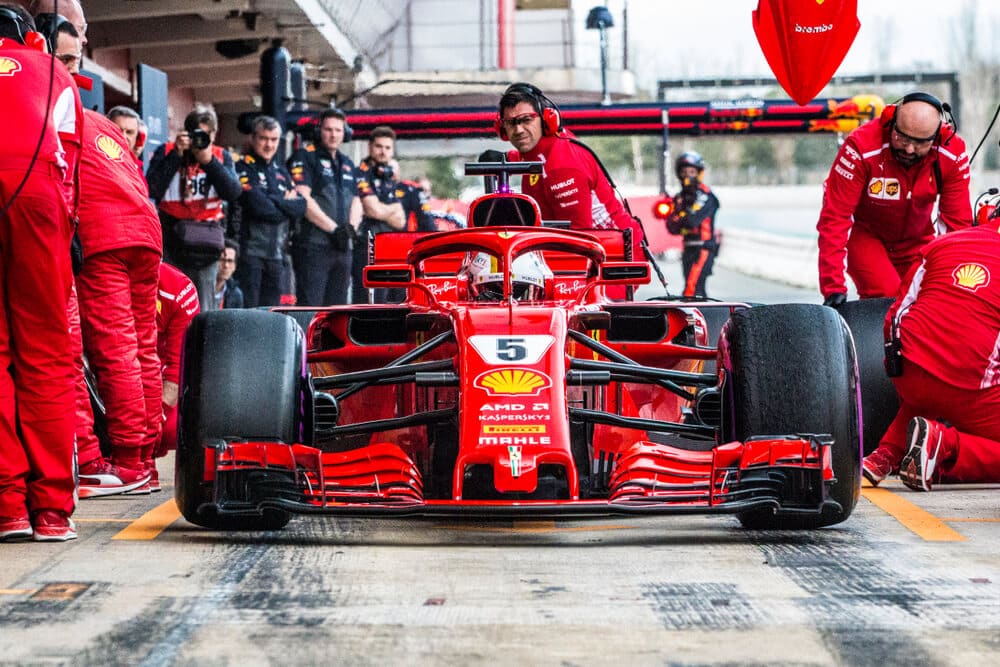In Formula One racing, strategies are crucial factors in determining a race’s outcome. While there are countless factors that fall under consideration when drafting the strategy, the driver’s required pitstops form a significant part of the strategy. Pit Stops are integral as they allow the team to make adjustments to the car so that it runs under the best conditions.
The timing of these pitstops can be critical, as a driver’s position on the track can be affected depending on when they decide to pit and for how long. It is when the undercut and overcut, two distinct yet equally determining, strategies come into play. Keeping in view their competitor’s position on track, the team unanimously decides on which approach to undertake.
Table of Contents
Watch this video to learn more about undercut vs overcut.
What Is The Difference Between Undercut And Overcut In F1?
The term undercut in Formula One refers to the chasing car stopping at the pits before the leading car changes tires. The strategy is put to use to take advantage of the fresh set of tires and set faster lap times to close the gap. It is important that the pit stops are executed precisely for this strategy to work effectively.
On the other hand, the overcut is quite literally the opposite of the undercut. It requires the driver in the back to wait for the leading car to make a pit stop. Although not commonly used, the overcut is beneficial in its own terms. It gives the chasing car a big edge over the now-pitted car, and the driver can take advantage of that opportunity to widen the gap while getting the most out of his worn tires.
Key takeaways
- Strategy plays a significant role in f1 racing, but as everything cannot be planned in advance, some decisions are taken in real-time.
- “Undercut” and “Overcut” are two racing strategies employed to gain an advantage or overtake the rival car.
- Undercut simply involves the driver at the back pitting one or two laps earlier than his opponent.
- Overcutting is a strategy that involves extending the stint by racing for a longer period of time on worn tires in order to benefit from racing in clean air.
- The undercut is the most popular strategy among the two; however, racing circumstances, such as tire performance levels, usually determine which tactic to use.

What Is An Undercut In F1?
The term ‘undercut’ refers to a racing strategy in F1 that is often employed when the driver wants to pass their opponent without overtaking. While it may seem simple, the actual process requires great precision and top-notch performance from everyone including the driver, pit crew, and race engineers.
The undercut involves a driver pitting for fresh tires earlier than their competitors in the hopes that the performance advantage of the new tires will allow them to pass the cars that have not yet been pitted. This tactic relies on the fact that tire wear is a major factor in F1 and that new tires will provide a significant performance boost.
The chasing car must first assess the state of its own and the leading car’s tires before executing a flawless undercut. The choice is then made to make an early pit stop in order to switch to a new set of tires that offer better traction and, eventually, enable drivers to achieve faster lap times.
Important Factors For Success
The success of this tactic depends on various factors, some of which are in the description below;
Timing
Timing is crucial at every step of the way. As the strategy involves closing the gap with the opponent car, the car at the back must have a speed advantage to set faster lap times. Fresh tires provide better grip and traction, but the driver must maintain a high speed to gain maximum benefit.
Tire Wear
It is not wrong to say that all the strategies are designed around tire performance as tire degradation is a significant factor in Formula One racing. It is essential to ensure that the car operates at its best and can compete successfully.
Before executing an undercut, the team must gauge the tire degradation levels of the opponent car and decide according to that. To sustain a high speed and gain time, the driver trying the undercut has to push their tires to the absolute limit.
Pit Stop Performance
In an F1 race, each millisecond makes a difference. Therefore, when the car stops in the pits to make adjustments, it must be carried out in the span of a few seconds to avoid compromising the driver’s race time.
A shorter pit stop gives the driver more time to make up the deficit on track, but this can be difficult to achieve if the team is not well-practiced at quick pit stops. A smooth and fast pitstop is essential to execute a flawless undercut.
What Is An Overcut In F1?
Although less frequently used, the overcut is an equally effective racing tactic that, when properly executed, can be advantageous. As it is very risky and requires better tire performance levels than the rival car, it is less popular. It relies on the chasing car holding off until the leading car decides to pit.
After the leading car pits, the car at the back can take advantage of the clean air and race under ideal conditions without any turbulence. It enables them to establish a gap between their car and the one that was in the lead before it entered the pits. In f1 terms, it is commonly known as widening the gap.
Important Factors For Success
Overcut is risky because of the technicalities involved in executing it. Each of the above-stated factors, including perfect timing, tire wear, and pit stop performance, are crucial to this strategy as well as the undercut. Additionally, it also requires ideal track conditions, pit lane length, track length, etc.
Track Conditions
Track conditions determine the grip level and surface, which affects the car’s speed and overall performance. For example, strategies employed on a dry track surface may not go well when the track is wet.
Car Performance
In an overcut, the car performance is not aided by a fresh set of tires, as the chasing driver does not pit but stays on track. Therefore, the car performing the overcut must be operating in ideal circumstances without the need for any adjustments.
One aiding factor, however, is the clean air that flows through the car after the leading driver has cleared the front position. It significantly aids the car’s performance.
Frequently asked questions about Double-stack pit stops
Does Overcutting In F1 Always Work?
Is Undercut Or Overcut Best In Formula One?
Is Overcut The Most Common Pit Stop Strategy In Formula 1?
Conclusion
In conclusion, winning an F1 race demands making critical strategic choices that have a substantial impact on the race’s outcome. Undercut and overcut are two such strategies employed to accomplish an overtake over the rival car.
Both strategies account for some factors before they can be executed, such as the tire wear rate and track conditions. Understanding how and when to use the undercut and overcut, two of the many strategies drivers might employ to gain an edge, can be the key to success.
Article sources
Learn more about Formula One
Want to learn more about F1? Then visit our Formula 1 glossary and dictionary.



